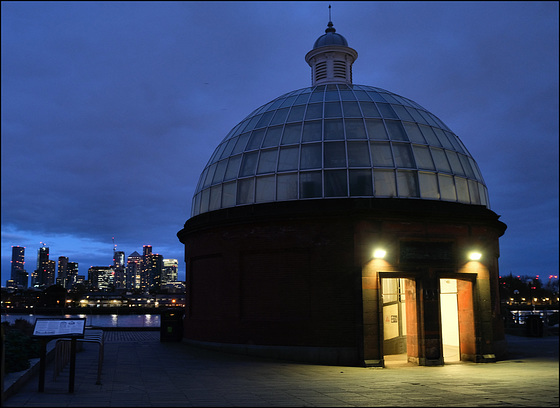Historical Origins
In the late 19th century, with the city's growing population and the industrial revolution in full swing, the need for a reliable river crossing in this area became increasingly apparent. The tunnel replaced an expensive and sometimes unreliable ferry service, allowing workers living south of the Thames to reach their workplaces in the London docks and shipyards in or near the Isle of Dogs. Prior to its construction, the only means of traversing the River Thames was by ferry, an option highly dependent on weather conditions and often plagued by delays. Recognizing this need, the London County Council approved the ambitious project.
Construction began in earnest, and the tunnel was officially opened to the public on August 4, 1902.
Engineering Marvel and Construction Challenges
The construction of the Greenwich Foot Tunnel was no small feat, requiring meticulous planning and engineering prowess. Stretching approximately 370 meters in length and plunging to a depth of 15 meters below the riverbed, it presented a unique set of challenges for the engineers and labourers involved.
One of the key innovations used during construction was the tunnelling shield - a device designed to protect workers and stabilize the tunnel walls. The shield allowed workers to excavate and construct the tunnel incrementally, providing a safe environment in the often treacherous conditions below the river.
The construction process took a total of four years, a remarkable achievement considering the time and technology available at the turn of the 20th century. It stands as a testament to the engineering ingenuity of the era and remains a source of pride for Londoners.
Importance and Contemporary Significance
- Daily Usage: On average, it is used by approximately 1.5 million people each year, making it an indispensable part of London's transportation network. Commuters, tourists, and residents alike rely on this subterranean passage for their daily journeys.
- Architectural Features: The Greenwich Foot Tunnel boasts distinctive architectural elements. Its circular entrance and exit, adorned with ornamental ironwork, have become iconic symbols of Greenwich. The interior of the tunnel is lined with glazed white tiles, creating a clean and reflective surface that enhances visibility, a welcome feature for travellers passing through.
- Tourist Attraction: Beyond its utilitarian purpose, the Greenwich Foot Tunnel has become a tourist attraction in its own right. Visitors are drawn to its historic charm and the unique experience of walking beneath the River Thames. It offers breathtaking views of the riverbanks and the iconic Cutty Sark ship nearby. The tunnel's presence on the tourist map underscores its cultural significance and appeal.
- The Greenwich Foot has made appearances in films (28 Days Later), music videos (Iron Maiden music video, 1980s), literature - so I am told but cannot find a reference anywhere...
Its iconic circular entrances are often featured in photographs capturing the essence of Greenwich.




Sign-in to write a comment.